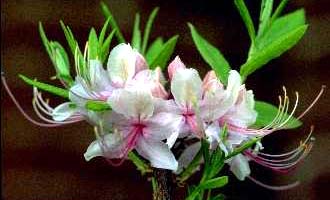Division is the most common and easiest method of propagating many perennials. It’s also a way of rejuvenating perennials that suffer from overcrowding. For these reasons, division is a technique worth learning.
Because it is often mentioned casually without a great deal of explanation, propagation by division is sometimes intimidating or mysterious to beginning gardeners. Even experienced gardeners are sometimes unsure which of several methods of division to use on a particular perennial, and what time of year is best for the task. The procedures described here will help you understand and apply proven techniques that will increase your chances for successful divisions and a vigorous, beautiful perennial garden.
Advantages of Division
Like propagation by layering or by cuttings, propagation by division is a "vegetative" (non-sexual) method of plant reproduction. Vegetative methods always produce new plants that are exact genetic copies of the old plants. Division is an ideal method for reproducing a particular strain of perennial flower that has done well in your (or your neighbor's) garden.
The second advantage of division is that it is often the only way to rejuvenate a treasured perennial that has become weak because of overcrowding. The spreading roots or rhizomes of many fast-growing perennials become so tightly intertwined that they choke off growth. This always results in reduced bloom. Dividing an overgrown clump will give you several smaller plants that bloom vigorously because they once again have room to grow. You will notice increased vigor in the original plants and the divisions.
A Simple Technique
To divide a perennial means to dig up a clump of plants, divide the clump into smaller sections with roots and upper growth intact, and then to replant the smaller sections (divisions). The exact method depends on the type of root system of the particular perennial.
Rhizomous perennials such as iris and bergenia are easy to lift. Shake off the soil so that it's easy to see the vigorous new rhizomes growing on the outside of the clump. Use a knife to cut these away, and replant immediately.
Shallow-rooted perennials such as primrose, and young, fibrous-rooted perennials such as black-eyed Susan and aster can be dug up and then divided by hand. Simply shake off the soil and pry them apart into several divisions.
Old, overcrowded perennials as well as some with very tightly intertwined root systems (daylily, for instance) can be dug up and then separated using two spading forks back to back to pry apart the root mass. Perennials with woody crowns should be cut apart with a knife. Some old, overgrown perennials can only be divided by hacking them apart with a machete or spade.
When to Divide
Deciding when to make divisions is not difficult if you keep in mind that the new plants will have to expend lots of energy establishing new root systems. The first rule on when to make divisions is to never divide when a perennial is about to bloom. The sudden diversion of energy from reproduction (flowering) to rooting will weaken the plants. The best time to divide spring-flowering perennials - such as primrose, bergenia, or moss pink - is summer or early fall. Summer-blooming perennials - lupine, sage, pincushin, coreopsis, and others - should be divided in late summer or early fall, and fall-blooming perennials - such as chrysanthemum, aster, plumbago, and goldenrod - in spring.
There are exceptions to these guidelines. In cold-winter climates, summer-blooming perennials must be divided in early spring; if you wait until fall, the tender new divisions will be killed by winter frost. On the other hand, divisions in very mild, wet-winter areas are best done in fall. Finally, avoid making divisions on hot, dry days. Cool, moist, overcast days are best.
Care of Divisions
Prepare the soil in advance to receive the new divisions. Keep a pail of water beside you as you make divisions, and periodically soak bare roots to keep them moist until you replant them. Keep divisions in the shade while they await replanting. If it becomes necessary to wait a day before replanting, keep the divisions in a box, covered with moist peat moss.
The care of newly planted divisions is much the same as that for any new perennials. Careful attention to watering is the most important thing. Keep divisions lightly shaded, especially on hot, sunny days. Protect them from drying winds. Lightly spray the foliage with water on warm days.
TIPS
It is not necessary to divide most perennials frequently. Divisions are usually made to relieve overcrowding that threatens plant health, or to increase a desirable plant.
Many small divisions will do better than a few large ones. The divisions from the outer edge of the clump will be the most vigorous. The woody center is usually discarded.
IMPORTANT
Certain perennials greatly dislike being disturbed. Attempting to divide these will often kill the plants, or at least set them back severely. Among these are columbine, hollyhock, baptisia, anemone hybrids, and Oriental poppy.
PERENNIALS PROPAGATED BY
DIVISION
|
Common Name |
|
Primrose |
|
Heartleaf
bergenia |
|
Peony |
|
Lupine |
|
Daylily |
|
Delphinium |
|
Marguerite |
|
Heliopsis |
|
Yarrow |
|
Aster |
|
|
Latin Name |
|
Primula |
|
Bergenia |
|
Paeonia |
|
Lupinus |
|
Hemerocallis |
|
Delphinium |
|
Chrysanthemum |
|
Heliopsis |
|
Achillea |
|
Aster |
|
|
Bloom Season |
|
Bloom |
|
Spring |
|
Spring |
|
Summer |
|
Summer |
|
Summer |
|
Summer |
|
Summer |
|
Summer |
|
Fall |
|


